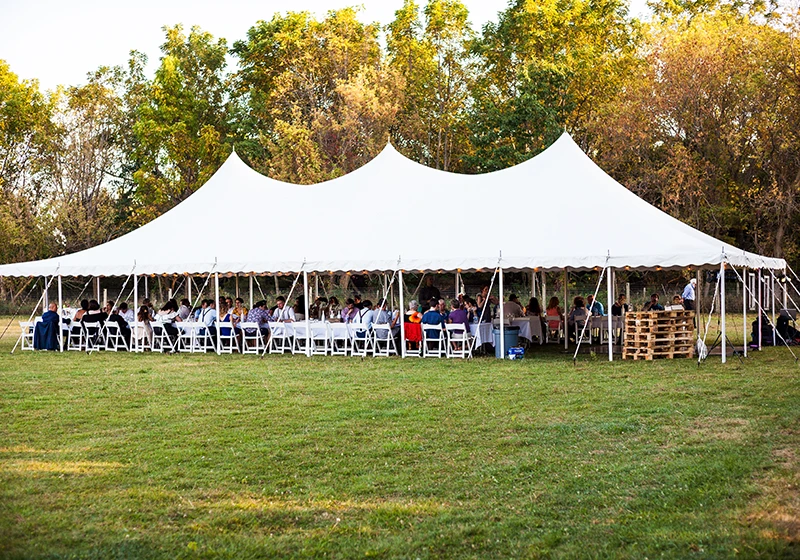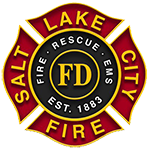
16 Nov Tents and Temporary Structures
TENT, TEMPORARY STAGE CANOPY AND OTHER MEMBRANE STRUCTURES PERMIT REQUIREMENTS
Updated 08/01/2023
Definition:
A tent is defined as a structure, enclosure or shelter, with or without sidewalls or drops, constructed of fabric or pliable material supported by any manner except by air or the contents that it protects.
A temporary stage canopy. A temporary ground supported membrane-covered frame structure used to cover stage areas and support equipment in the production of outdoor entertainment events.
Tents, stages and other membrane structures needing a permit:
Tents with one or more sides over 400 square feet. (Single or combine sq. ft.)
Tents open on all sides over 700 square feet. (Single or combine sq. ft.)
Cooking tents used in an aggregate configuration. (Ten foot separation)
To avoid the permit requirement on multiple tents there must be a 12 foot space every 400 to 700 sq. ft.
Temporary stage canopies in excess of 400 square feet (37m2) shall not be erected, operated or maintained for any purpose without first obtaining approval and a permit from the fire code official and the building official.
Permitting process:
All tents and other membrane structures shall comply with Chapter 31 of the 2021 International Fire Code.
Apply for the permit thirty (14) days prior to tent, stage canopy set up.
Apply for permit online. The application will be reviewed for compliance to the fire code and a permit fee will be accessed.
Payments can be made online or via check. All Checks should be made payable to Salt Lake City Corporation
A temporary permit will be issued upon the physical inspection of the location and structure. A permit issued by the Fire Marshal will be required for each tent, stage canopy and temporary structure as per the requirements stated above. (The permit application should contain the following)
A complete site plan, including the location of fire access roads, hydrants, property lines, and the location of nearby structures.
The California State Fire Marshal’s flame retardant certification seal must be visibly displayed on the tent or canopy.
A plan for the interior of the tent, including seating arrangements and the location and type of heating or cooking equipment.
A full set of construction documents including structural calculation and detailed drawings of connections are required and will be reviewed at the discretion of the Fire Marshal.
The time period for which the tent or structure is intended to be in place. No longer than 180 days per Salt Lake City requirements.
Temporary stage canopies shall not be erected for a period of more than 45 days.
General Requirements for all Tents, Stage Canopies, & Temporary Structures:
All tents and membrane structures must be properly secured in case of wind (40 mph basic wind speed and 90 mph 3-second gust). Securing of the structures is the responsibility of the owner/operator (refer to IBC 1609)
A portable fire extinguisher with a minimum 2A10BC rating must be accessible within 75 feet walking distance of all tents/temporary structures, at a minimum, as required by section 906 of the IFC. All extinguishers require a current State Fire Marshal’s inspection tag. Inspection tags are required annually.
No smoking signs must be provided in each permitted tent.
Exits shall be clearly marked and lighted when the exits serve an occupant load of 50 or more.
All compressed gas bottles must be secured at all times to prevent them from tipping over.
Generators must be maintained at least 20 feet from any tent or temporary structure.
No combustible waste can be stored within 30 feet of a tent or temporary structure.
Cooking Tents or Areas:
In addition to the general requirement cooking tent must also meet these requirements:
Flame retardant certification must be provided for all temporary structures utilized for cooking or heating of food. California State Fire Marshal’s flame retardant certification seal must be visibly affixed to the tent.
Tents where cooking takes place, or cooking tents in an aggregate configuration, must be at least 20 feet from any building or other tents. Aggregate cooking tents will maintain 10 foot separation from adjacent cooking tents.
A portable fire extinguisher with a minimum 4A40BC rating must be provided for each tent where cooking is taking place. If there are grease laden vapors present, a K type extinguisher is also required. (i.e.: deep fat frying) Inspection tags are required annually.
LP gas cylinders, up to 500 gallons, must be stored outside and kept a minimum of 10 feet from any other structure. Cylinders capable of holding 501 gallons and greater shall require a 25 foot separation.
Any open flame cooking or heat cooking will be supervised by an adult at all time. This adult will serve as a fire watch and standby personnel to take prompt measures for extinguishment of fires that occur and assist in the evacuation of the public from the structure. (Refer to IFC 3104.2)
